Makar Sankranti, also known as Maghi, Uttarayan, or simply Sankranti, is one of the most celebrated festivals in India. Observed on the 14th of January each year, Makar Sankranti marks the transition of the Sun into the zodiac sign of Capricorn (Makar), symbolizing the end of the winter solstice and the beginning of longer days. It holds immense cultural, religious, and social significance across different regions of the country. Here are the top 10 traditions and customs associated with Makar Sankranti:
Makar Sankranti is a joyous occasion that celebrates the spirit of unity, prosperity, and renewal. Through its diverse traditions and customs, the festival brings communities together in a spirit of shared joy and gratitude, reaffirming the bonds of kinship, culture, and tradition that enrich the fabric of Indian society.
Kite Flying (Uttarayan):
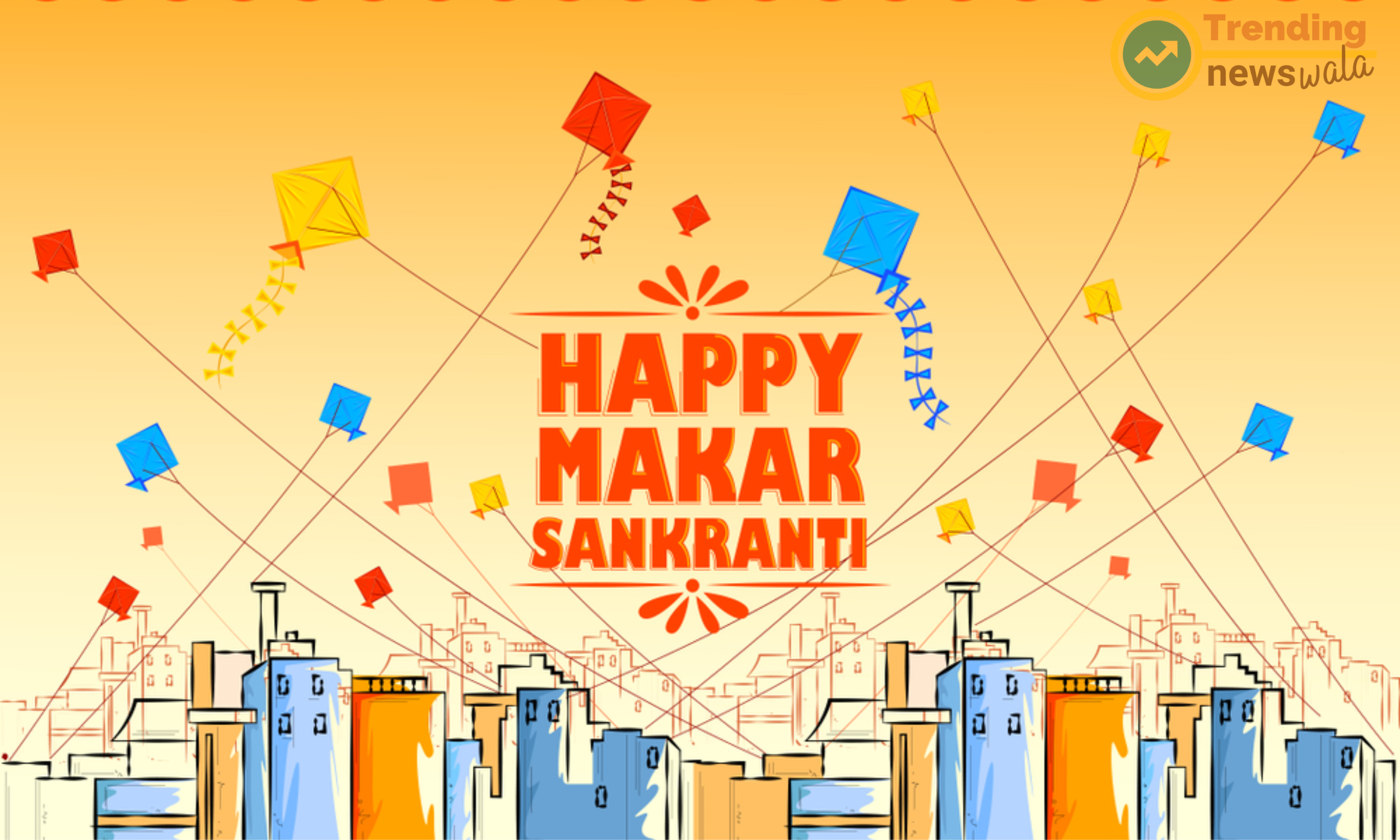
One of the most iconic aspects of Makar Sankranti is kite flying, especially in states like Gujarat, Rajasthan, Maharashtra, and Uttar Pradesh. The skies are adorned with colorful kites of various shapes and sizes, symbolizing joy, freedom, and the arrival of spring. People of all ages gather on rooftops and open fields to participate in friendly kite-flying competitions and enjoy the festive atmosphere.
- Certainly! Kite flying, also known as Uttarayan, is one of the most iconic and beloved traditions associated with Makar Sankranti, particularly in the western states of India such as Gujarat, Rajasthan, Maharashtra, and Uttar Pradesh. Here are more details about kite flying during Uttarayan:
- Symbolism: Kite flying during Makar Sankranti symbolizes the transition from darkness to light, as the Sun begins its northward journey (Uttarayan) and the days become longer. It is believed to bring good luck, prosperity, and happiness for the year ahead. The colorful kites soaring high in the sky represent the spirit of freedom, joy, and celebration.
- Preparation: The preparation for kite flying begins weeks in advance, with enthusiasts flocking to markets to purchase kites, string (manja), and other necessary materials. Kites come in various shapes, sizes, and designs, ranging from traditional diamond-shaped kites to more elaborate creations adorned with colorful patterns and motifs.
- Kite Making: In addition to purchasing kites from the market, many enthusiasts also take pride in making their own kites at home. Kite making is considered an art form, passed down through generations, with skilled artisans crafting intricate designs using bamboo frames, tissue paper, glue, and decorative elements.
- Friendly Competition: On the day of Makar Sankranti, neighborhoods, rooftops, and open fields come alive with the sound of kites fluttering in the breeze. Enthusiasts of all ages gather to participate in friendly kite-flying competitions, testing their skills in maneuvering, cutting, and capturing opposing kites. The atmosphere is filled with excitement, camaraderie, and cheering as participants strive to outfly their opponents.
- Manjha (Kite String): One of the distinctive features of kite flying during Makar Sankranti is the use of specialized kite string known as manjha. Manjha is made by coating cotton or nylon thread with a mixture of crushed glass and glue, giving it a sharp and abrasive edge. This coated string is used to cut the strings of competing kites in a thrilling aerial battle known as "patangbaazi."
- Safety Measures: While kite flying is a joyous activity, it is essential to observe safety precautions to prevent accidents and injuries. Participants are advised to wear protective gloves and eyewear to avoid cuts from the sharp kite string. Additionally, care should be taken to ensure that kites are flown in open spaces away from overhead power lines and traffic.
- Cultural Significance: Kite flying during Makar Sankranti has deep cultural roots and is believed to have originated centuries ago. It is associated with the harvesting season, when farmers celebrate the arrival of longer days and pray for a bountiful harvest. The festival also serves as a platform for promoting tourism and cultural exchange, with kite festivals attracting visitors from around the world.
- Modern Trends: In recent years, kite flying during Makar Sankranti has evolved to include modern innovations such as LED kites, stunt kites, and night kite flying competitions. These innovations add a new dimension to the traditional practice, attracting enthusiasts of all ages and backgrounds.
In summary, kite flying during Makar Sankranti is a cherished tradition that brings communities together in a spirit of joy, camaraderie, and celebration. It symbolizes the triumph of light over darkness and serves as a colorful expression of cultural heritage, creativity, and skill.
Feasting and Special Delicacies:
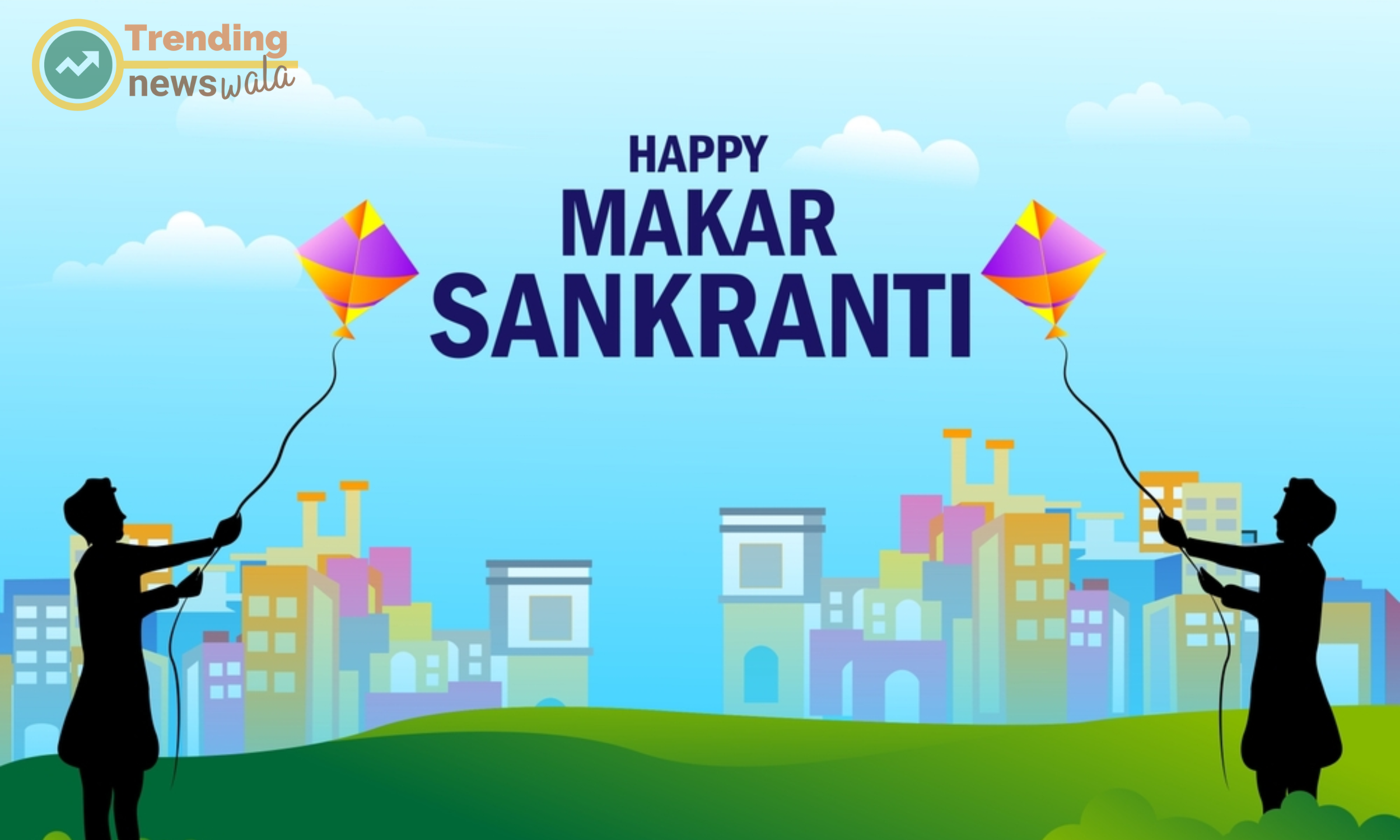
Makar Sankranti is synonymous with feasting and indulging in traditional delicacies made from sesame seeds, jaggery, rice, and lentils. Tilgul (sesame seed sweets) and chikkis (brittle sweets) are prepared and shared with family, friends, and neighbors as a symbol of goodwill and prosperity. Pongal in South India and Lohri in North India are some of the regional variations of festive dishes prepared during Makar Sankranti.
- Feasting and enjoying special delicacies is an integral part of Makar Sankranti celebrations. Here are more details about the culinary traditions associated with this festive occasion:
- Tilgul (Sesame Seed Sweets): Tilgul, also known as til ladoo or til chikki, is a popular sweet prepared during Makar Sankranti. It is made by roasting sesame seeds and mixing them with jaggery (unrefined cane sugar) or sugar syrup. The mixture is then shaped into small balls or squares. Tilgul symbolizes the sweetness of relationships and is exchanged among family members, friends, and neighbors along with the greeting "Tilgul ghya, god god bola" which means "Accept this tilgul and speak sweet words."
- Chikki (Brittle Sweets): Chikki is another favorite sweet enjoyed during Makar Sankranti. It is made by caramelizing jaggery or sugar and mixing it with roasted nuts such as peanuts, almonds, cashews, or sesame seeds. The mixture is then spread thinly and allowed to cool and harden before being cut into squares or bars. Chikki is crunchy, flavorful, and provides a delightful contrast of textures.
- Pongal: In South India, particularly in Tamil Nadu, Makar Sankranti is celebrated as Pongal, a harvest festival dedicated to the Sun god and nature. The main dish prepared during Pongal is also called Pongal, which is a sweet and savory rice dish cooked with jaggery, milk, lentils, and flavored with cardamom, cashews, and raisins. Pongal is traditionally cooked in earthen pots over an open flame, symbolizing abundance and prosperity.
- Lohri Delicacies: In North India, particularly in Punjab and Haryana, Makar Sankranti is celebrated as Lohri, which marks the end of the winter season and the onset of longer days. Traditional Lohri delicacies include sarson da saag (mustard greens curry), makki di roti (cornbread), gajak (sesame seed brittle), rewri (jaggery candy), and moongphali (roasted peanuts). These dishes are enjoyed around the bonfire during Lohri celebrations.
- Sesame Seed Preparations: Sesame seeds, known as til in Hindi, are a key ingredient in many Makar Sankranti delicacies due to their auspiciousness and nutritional value. Apart from tilgul and chikki, sesame seeds are also used in savory snacks such as til patti (sesame seed brittle), til gajak (sesame seed jaggery bar), and til laddu (sesame seed balls). These preparations are rich in nutrients and provide warmth and energy during the winter season.
- Regional Variations: The culinary traditions of Makar Sankranti vary across different regions of India, with each region having its own unique specialties and delicacies. For example, in Maharashtra, people prepare puran poli (sweet stuffed flatbread) and tilgul poli (sesame seed stuffed flatbread) along with other sweets and savory dishes. In Karnataka, people prepare ellu-bella (a mixture of sesame seeds, jaggery, coconut, and peanuts) and yellu (a dish made with sesame seeds and jaggery). These regional variations add diversity and richness to the festive feasts enjoyed during Makar Sankranti.
In summary, feasting and enjoying special delicacies are an essential part of Makar Sankranti celebrations, bringing families and communities together in a spirit of joy, abundance, and gratitude. From sweet treats like tilgul and chikki to savory dishes like Pongal and Lohri specialties, the culinary traditions of Makar Sankranti reflect the richness of Indian culture and the bounty of the harvest season.
Holy Dip in Sacred Rivers:
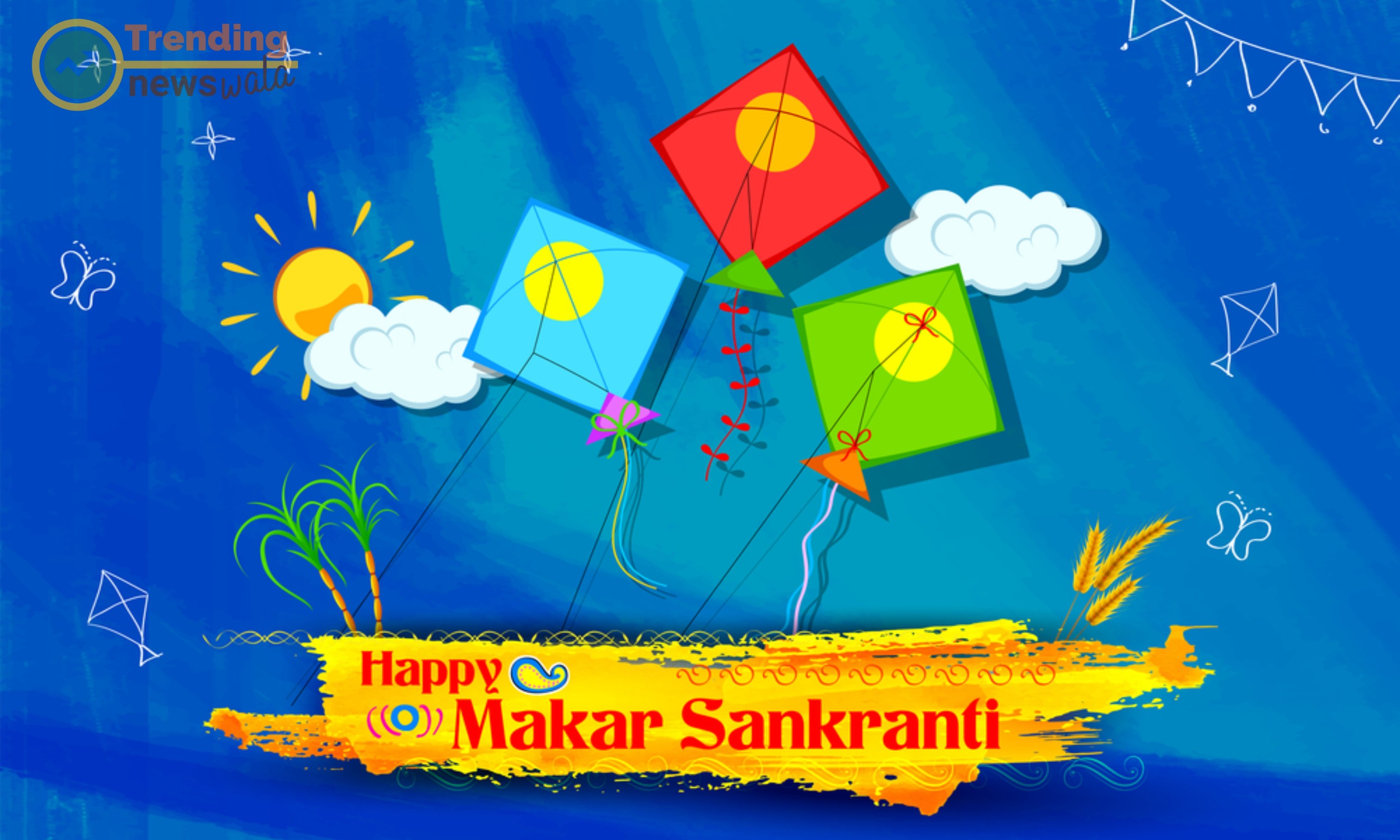
Taking a holy dip in rivers, especially the Ganges, Yamuna, Godavari, and Cauvery, is considered auspicious on Makar Sankranti. Devotees gather at riverbanks and ghats to bathe in the icy-cold waters, perform rituals, and seek blessings for spiritual purification and good fortune. The act of bathing in rivers is believed to wash away sins and facilitate salvation.
- Taking a holy dip in sacred rivers is a cherished tradition associated with Makar Sankranti, particularly in regions where rivers hold significant religious importance. Here are more details about this sacred practice:
- Spiritual Significance: The practice of taking a holy dip in rivers during Makar Sankranti is rooted in Hindu religious beliefs and symbolism. Rivers are considered sacred in Hinduism, often personified as goddesses (such as Ganga, Yamuna, Godavari, and Saraswati) and revered as embodiments of purity, divinity, and spiritual liberation. Taking a dip in these sacred waters is believed to cleanse one's sins, purify the soul, and bestow blessings for spiritual growth and well-being.
- Auspicious Timing: Makar Sankranti is considered an auspicious day for taking a holy dip, as it marks the transition of the Sun into the zodiac sign of Capricorn (Makar) and the beginning of longer days. Devotees believe that bathing in rivers during this time enhances the potency of the ritual and ensures divine blessings for the entire year ahead. The early morning hours, known as the Brahma Muhurta, are considered particularly auspicious for performing spiritual practices and rituals.
- Gathering at Ghats and Riverbanks: On Makar Sankranti, devotees gather at ghats (riverbanks) and sacred pilgrimage sites along rivers to take a holy dip and perform rituals. These ghats are adorned with colorful decorations, flower garlands, and temporary shelters to accommodate the large influx of pilgrims. Devotees come from far and wide, dressed in traditional attire, carrying offerings of flowers, fruits, and sweets to offer to the river goddesses.
- Rituals and Offerings: Before entering the water, devotees perform ablutions (purification rituals) by chanting prayers, lighting incense, and offering prayers to the Sun god and river goddesses. They then immerse themselves fully in the water, reciting mantras and offering prayers for the well-being of themselves, their families, and all sentient beings. Some devotees also collect water from the river to carry back home as holy water (tirtha) for use in religious ceremonies and rituals.
- Participation of Pilgrims and Sadhus: Makar Sankranti attracts a diverse array of pilgrims, including men, women, children, and sadhus (holy men) from various spiritual traditions. Sadhus, adorned in saffron robes and rudraksha beads, often lead congregational prayers and spiritual discourses at the riverbanks, imparting wisdom and guidance to devotees. The presence of sadhus adds to the sanctity and spiritual ambiance of the holy dip ceremony.
- Environmental Conservation: In recent years, there has been a growing emphasis on environmental conservation and cleanliness during holy dip rituals. Authorities and environmental organizations work to ensure the cleanliness of river waters and provide facilities for waste disposal and sanitation. Awareness campaigns are conducted to promote eco-friendly practices and discourage the use of harmful substances in the rivers.
- Social and Cultural Significance: The holy dip tradition during Makar Sankranti is not only a religious practice but also a social and cultural phenomenon. It brings communities together in a spirit of devotion, unity, and collective worship, transcending barriers of caste, creed, and nationality. Pilgrims share food, stories, and blessings, fostering a sense of camaraderie and brotherhood among all participants.
In summary, the holy dip in sacred rivers during Makar Sankranti is a profound spiritual practice that symbolizes purification, renewal, and divine grace. It is an expression of devotion, gratitude, and reverence towards the sacred waters and the divine forces that sustain life. Through this sacred ritual, devotees seek blessings for spiritual upliftment, inner purification, and divine guidance on their spiritual journey.
Makar Sankranti Melas (Fairs):

Across India, Makar Sankranti is celebrated with vibrant melas or fairs, showcasing local culture, arts, crafts, and cuisine. These melas feature amusement rides, folk performances, traditional music, dance, and other cultural activities that attract large crowds. It's a time for families to come together, shop for handicrafts, enjoy street food, and immerse themselves in the festive spirit.
- Makar Sankranti Melas, or fairs, are vibrant celebrations that add to the festive atmosphere of Makar Sankranti. Here are more details about these fairs:
- Community Gatherings: Makar Sankranti Melas are large-scale community gatherings held in various cities, towns, and villages across India. These fairs bring together people from diverse backgrounds to celebrate the festival in a spirit of unity, joy, and camaraderie.
- Cultural Extravaganza: Makar Sankranti Melas are known for their rich cultural heritage and diverse offerings. They feature a wide array of cultural performances, including folk music, dance, theater, and traditional arts and crafts demonstrations. Visitors are treated to mesmerizing performances by local artists and troupes, showcasing the vibrant cultural tapestry of India.
- Marketplace for Handicrafts: Makar Sankranti Melas serve as bustling marketplaces where artisans and craftsmen display their wares. Visitors can explore stalls selling a variety of handicrafts, handloom textiles, pottery, jewelry, and other traditional items. These fairs provide a platform for artisans to showcase their skills and craftsmanship and offer visitors an opportunity to purchase unique souvenirs and gifts.
- Culinary Delights: Food plays a central role in Makar Sankranti Melas, with an abundance of culinary delights to tempt the taste buds. Visitors can indulge in a variety of street food, regional delicacies, and traditional sweets prepared specially for the occasion. From piping hot jalebis and samosas to savory snacks like pakoras and chaat, there's something to satisfy every palate.
- Amusement Rides and Games: Makar Sankranti Melas offer entertainment for people of all ages with a wide range of amusement rides, carnival games, and fun activities. Children can enjoy rides on merry-go-rounds, ferris wheels, and giant slides, while adults can test their skills at game stalls offering prizes and rewards.
- Livestock Shows and Competitions: In rural areas, Makar Sankranti Melas often include livestock shows and competitions, showcasing the best breeds of cattle, buffaloes, goats, and poultry. Farmers proudly display their animals, competing for prizes based on criteria such as size, weight, and breed standards. These shows celebrate the importance of livestock in agriculture and rural livelihoods.
- Spiritual and Religious Activities: Makar Sankranti Melas also feature spiritual and religious activities, including prayers, hymn recitations, and devotional ceremonies dedicated to Lord Surya (the Sun god) and other deities. Temples and shrines located within the fairgrounds attract devotees who come to seek blessings and offer prayers for prosperity and well-being.
- Tourist Attractions: Makar Sankranti Melas are major tourist attractions, drawing visitors from far and wide to experience the festive fervor and cultural vibrancy of the occasion. Tourists can immerse themselves in the sights, sounds, and flavors of India, gaining insights into its rich cultural heritage and traditions.
In summary, Makar Sankranti Melas are vibrant celebrations that showcase the cultural diversity, artistic talent, and festive spirit of India. From cultural performances and handicrafts to culinary delights and amusement rides, these fairs offer something for everyone to enjoy, making them an integral part of the Makar Sankranti festivities.
Cow Worship (Goru Bihu):
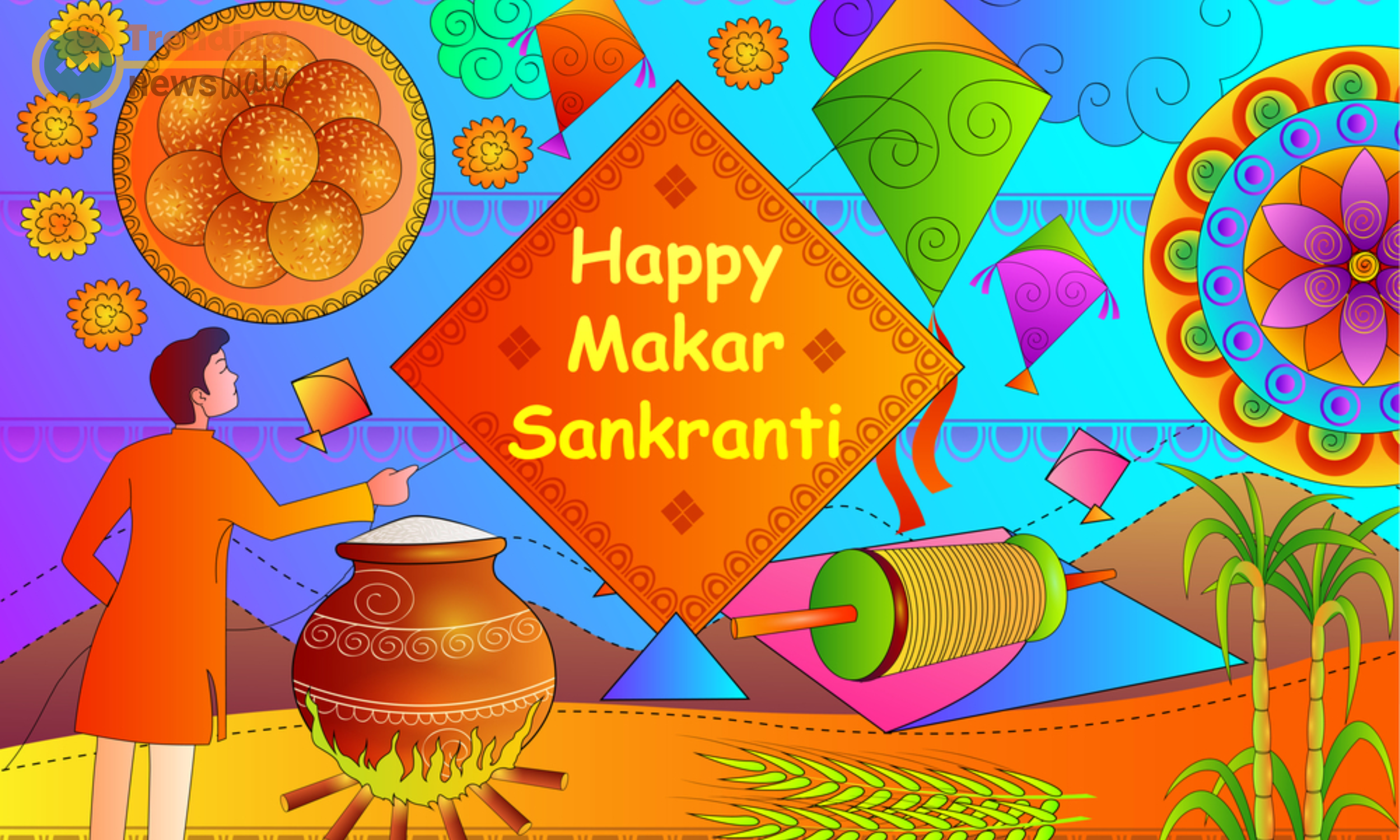
In the northeastern state of Assam, Makar Sankranti is celebrated as Bhogali Bihu or Magh Bihu. On this day, farmers pay homage to their cattle and livestock, as they play a vital role in agricultural activities. Cows are adorned with garlands, offered special treats, and worshipped as symbols of prosperity and agricultural abundance.
- Cow worship, also known as Goru Bihu, is a significant aspect of Makar Sankranti celebrations in the northeastern Indian state of Assam. Here are more details about this tradition:
- Cultural Significance: Goru Bihu is a traditional ritual observed by the people of Assam as part of their harvest festival, Bhogali Bihu or Magh Bihu. It is celebrated on the day preceding Makar Sankranti, known as Uruka. Goru Bihu holds immense cultural significance in Assamese society, reflecting the deep reverence and respect accorded to cows as symbols of wealth, prosperity, and agricultural abundance.
- Homage to Cattle: Goru Bihu is dedicated to honoring and worshiping cattle, particularly cows, which are considered sacred and revered as manifestations of the divine in Hinduism. Cows play a vital role in Assamese agriculture, providing milk, dung, and labor for plowing fields. They are also integral to the rural economy and are regarded as members of the family in many households.
- Rituals and Offerings: On Goru Bihu, cattle are bathed, adorned with garlands of flowers, and offered special treats as a token of appreciation for their contributions to agriculture and daily life. Farmers wake up early in the morning and take their cattle to nearby rivers or water bodies for a ceremonial bath, symbolizing purification and renewal. After bathing, the cattle are decorated with vermilion, turmeric, and garlands made of marigold flowers and mango leaves.
- Feeding Rituals: As part of the Goru Bihu rituals, special meals are prepared for the cattle, consisting of a variety of nutritious foods such as rice, pulses, green fodder, and sugarcane. These offerings are placed in front of the cattle in their sheds or grazing fields, and prayers are offered for their well-being, health, and fertility. Feeding the cattle is considered an act of compassion and gratitude, ensuring their prosperity and welfare in the coming year.
- Community Participation: Goru Bihu is celebrated with great enthusiasm and participation from the entire community. Families come together to perform the rituals, share festive meals, and exchange greetings and blessings with neighbors and relatives. It is a time for social bonding, goodwill, and collective celebration, strengthening the ties of kinship and community spirit.
- Cultural Performances: In addition to the religious rituals, Goru Bihu is marked by cultural performances, including traditional music, dance, and folk songs. People gather in open fields or community centers to enjoy performances by local artists and troupes, showcasing the rich cultural heritage of Assam. Bihu dances, characterized by rhythmic movements and vibrant costumes, are a highlight of the festivities.
- Symbolism of Prosperity: Goru Bihu symbolizes the prosperity and abundance associated with the harvest season in Assam. By honoring and worshiping cattle, farmers express gratitude for the fertility of the land, the success of their crops, and the blessings of nature. The rituals of Goru Bihu reinforce the deep connection between humans, animals, and the environment, emphasizing the interdependence of all living beings.
In summary, Goru Bihu is a sacred tradition that celebrates the symbiotic relationship between humans and cattle in Assamese culture. Through rituals of worship, feeding, and community celebration, Goru Bihu embodies the values of gratitude, compassion, and reverence for nature, making it an integral part of the festive traditions of Makar Sankranti in Assam.
Rituals and Puja:
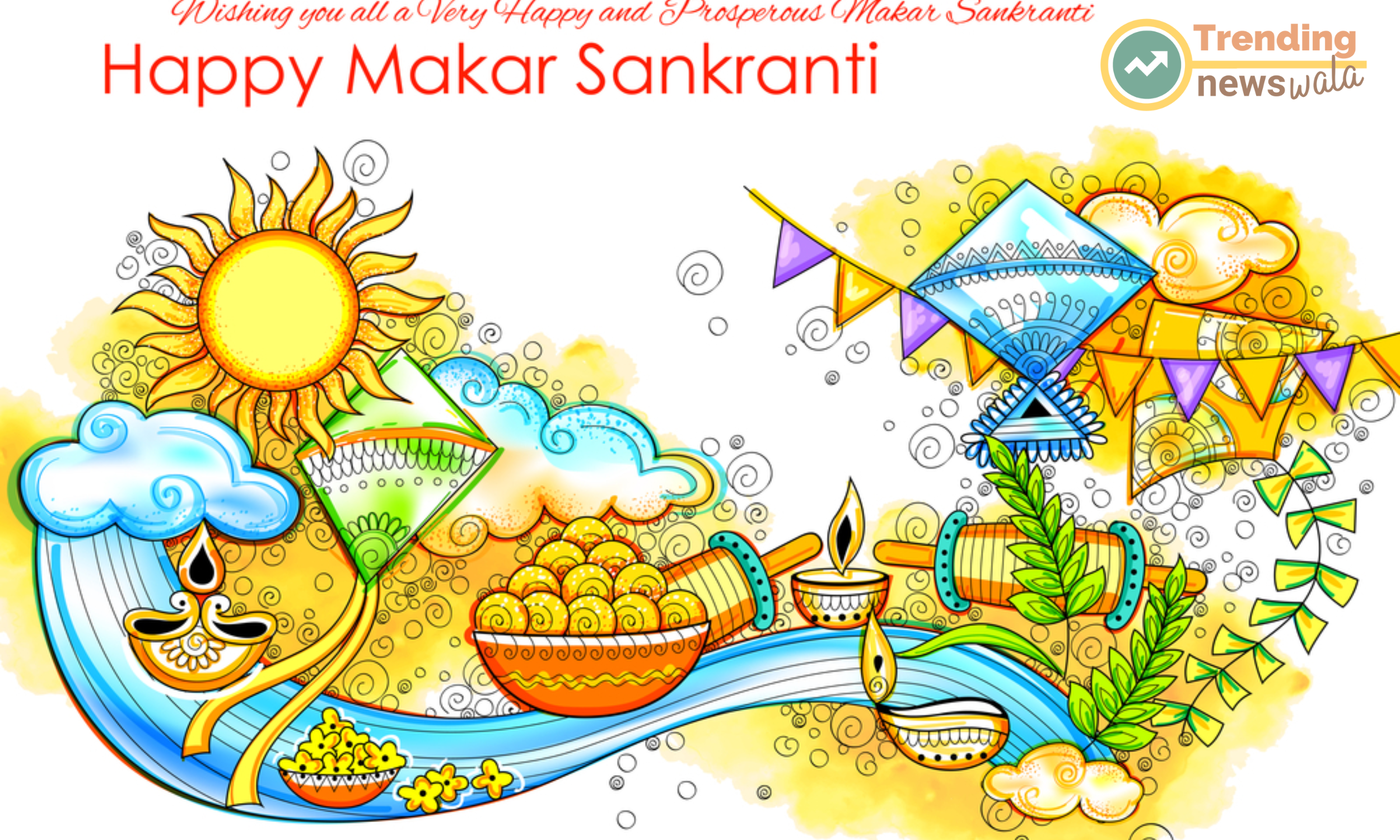
Makar Sankranti is also a time for performing various rituals and puja ceremonies dedicated to Lord Surya (the Sun god) and other deities. Devotees wake up early in the morning, take ritual baths, and offer prayers, flowers, and sweets to the Sun god. Special Surya temples, such as the Konark Sun Temple in Odisha, witness large gatherings of devotees on this auspicious day.
- Rituals and puja ceremonies play a central role in Makar Sankranti celebrations, reflecting the religious and spiritual significance of the festival. Here are more details about the rituals and puja associated with Makar Sankranti:
- Worship of Lord Surya (Sun God): Makar Sankranti is primarily dedicated to Lord Surya, the Sun god, who is revered as the source of light, energy, and life. Devotees wake up before dawn and take ritual baths in rivers, lakes, or water bodies to purify themselves before offering prayers to the Sun god. Special puja ceremonies are performed at temples dedicated to Lord Surya, where priests chant Vedic hymns, offer water, flowers, incense, and light lamps as offerings.
- Sankranti Snan (Holy Bath): Taking a holy dip in sacred rivers or water bodies is considered auspicious on Makar Sankranti. Devotees believe that bathing during the auspicious hour of Makar Sankranti washes away sins, purifies the soul, and bestows blessings for spiritual growth and well-being. Pilgrims gather at ghats (riverbanks) and perform ablutions while reciting prayers and mantras dedicated to Lord Surya and other deities.
- Offerings and Prayers: Devotees offer various offerings (naivedya) to Lord Surya as part of the puja rituals. These offerings typically include fruits, flowers, sweets, coconut, jaggery, rice, and other vegetarian delicacies. The act of offering is accompanied by heartfelt prayers for prosperity, abundance, good health, and success in endeavors. Some devotees also perform arghya (offering water) to the Sun god, symbolizing reverence and gratitude.
- Surya Namaskar (Sun Salutation): Surya Namaskar, or Sun Salutation, is a series of yoga postures performed as a form of worship to Lord Surya. It consists of twelve asanas (poses) that are synchronized with the breath, stretching and energizing the entire body. Many yoga practitioners perform Surya Namaskar on Makar Sankranti as a symbolic gesture of paying homage to the Sun god and invoking his blessings for vitality, strength, and spiritual illumination.
- Ritualistic Observances: Makar Sankranti is also marked by various ritualistic observances and customs that vary across different regions of India. For example, in some parts of the country, people create colorful rangoli designs at their doorsteps to welcome prosperity and good fortune. In Maharashtra, special pujas are performed for cows and bulls, symbolizing gratitude for their role in agriculture and rural livelihoods.
- Fasting and Austerity: Some devotees observe fasting (vrat) or undertake austerity practices on Makar Sankranti as a means of spiritual purification and self-discipline. Fasting may involve abstaining from certain foods or consuming only simple vegetarian meals. It is believed that fasting on Makar Sankranti strengthens one's devotion, enhances spiritual awareness, and facilitates inner purification.
- Community Puja Ceremonies: Makar Sankranti is often celebrated with grand community puja ceremonies organized by temples, cultural organizations, and community groups. These puja ceremonies bring people together in a spirit of unity and devotion, fostering a sense of belonging and collective worship. Participants offer prayers, chant hymns, and partake in the distribution of prasad (blessed food) as a token of divine grace and blessings.
In summary, rituals and puja ceremonies are integral to Makar Sankranti celebrations, providing devotees with opportunities for spiritual devotion, purification, and communion with the divine. Through prayers, offerings, and observances, devotees seek blessings for prosperity, well-being, and spiritual enlightenment, reaffirming their faith and devotion to Lord Surya and the divine forces that govern the universe.
Bonfires and Community Gatherings:
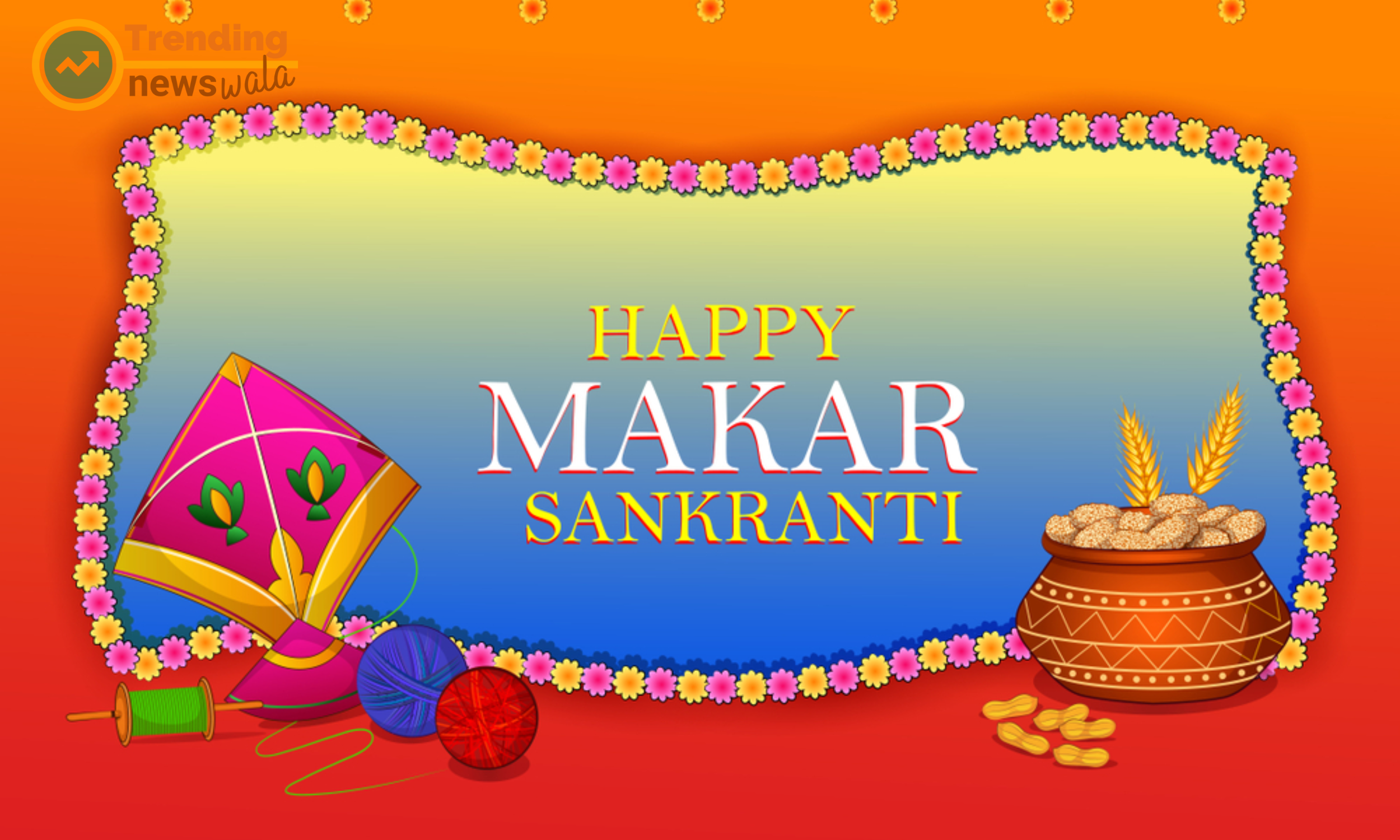
In North India, particularly in Punjab and Haryana, Makar Sankranti is celebrated as Lohri, marking the end of the winter season. Bonfires are lit in the evening, around which people gather to sing traditional songs, dance the bhangra and gidda, and enjoy festive treats like popcorn, peanuts, and rewri. It's a time for community bonding and rejoicing the harvest season.
- Bonfires and community gatherings are prominent features of Makar Sankranti celebrations, particularly in North India where the festival is known as Lohri. Here are more details about these aspects of the festival:
- Bonfires (Lohri): In North India, especially in Punjab, Haryana, and parts of Himachal Pradesh, Makar Sankranti is celebrated as Lohri, which is synonymous with bonfires. Lohri bonfires are lit in open spaces such as fields, streets, or communal grounds on the eve of Makar Sankranti, typically on the 13th of January. These bonfires, known as "lohri" or "lopri," symbolize the return of longer days and the end of the winter season.
- Gathering Around the Bonfire: Community members gather around the bonfire to celebrate the festival with joy and enthusiasm. People of all ages, from children to elders, come together to participate in the festivities. They sing traditional songs, dance to the beat of drums (dhol), and engage in cheerful conversations while basking in the warmth of the bonfire. The bonfire serves as a focal point for communal bonding and collective celebration.
- Folk Songs and Dances: Lohri celebrations are accompanied by lively folk songs and dances performed around the bonfire. People sing traditional Lohri songs (Lohri geet) in praise of Dulla Bhatti, a legendary hero who is revered for his generosity and bravery. The songs narrate the folklore associated with Lohri and celebrate the spirit of the harvest season. Bhangra, Giddha, and other folk dances are also performed with gusto, adding to the festive ambiance.
- Distribution of Prasad: As part of the Lohri celebrations, prasad (blessed food) is distributed among the gathering. Traditional Lohri delicacies such as gajak (sesame seed brittle), rewri (jaggery candy), peanuts, popcorn, and other sweets are offered as prasad to everyone present. The distribution of prasad symbolizes sharing, generosity, and abundance, fostering a sense of community and goodwill among participants.
- Symbolism of Renewal: The bonfire holds symbolic significance in Lohri celebrations, representing the triumph of light over darkness and the renewal of life. As the flames leap high into the night sky, they dispel the chill of winter and herald the arrival of warmer days. The bonfire is also believed to ward off evil spirits and bring blessings for prosperity, fertility, and happiness in the year ahead.
- Cultural Traditions: Lohri bonfires are steeped in cultural traditions and customs passed down through generations. The festival is an occasion for families to come together, exchange greetings, and seek blessings from elders. It is also an opportunity to showcase traditional attire, jewelry, and customs, preserving and perpetuating the rich cultural heritage of the region.
- Community Feasting: Lohri celebrations are incomplete without sumptuous feasts shared among family, friends, and neighbors. Traditional Punjabi dishes such as sarson da saag (mustard greens curry), makki di roti (cornbread), dal makhani (creamy lentils), and paneer tikka are prepared in abundance. The feast brings people closer together, fostering a sense of unity, harmony, and solidarity within the community.
In summary, bonfires and community gatherings are integral to Makar Sankranti celebrations, particularly in North India where Lohri is observed with great fervor. These festivities symbolize the spirit of togetherness, resilience, and hope, uniting communities in a shared celebration of light, warmth, and abundance.
Charitable Giving (Daan):
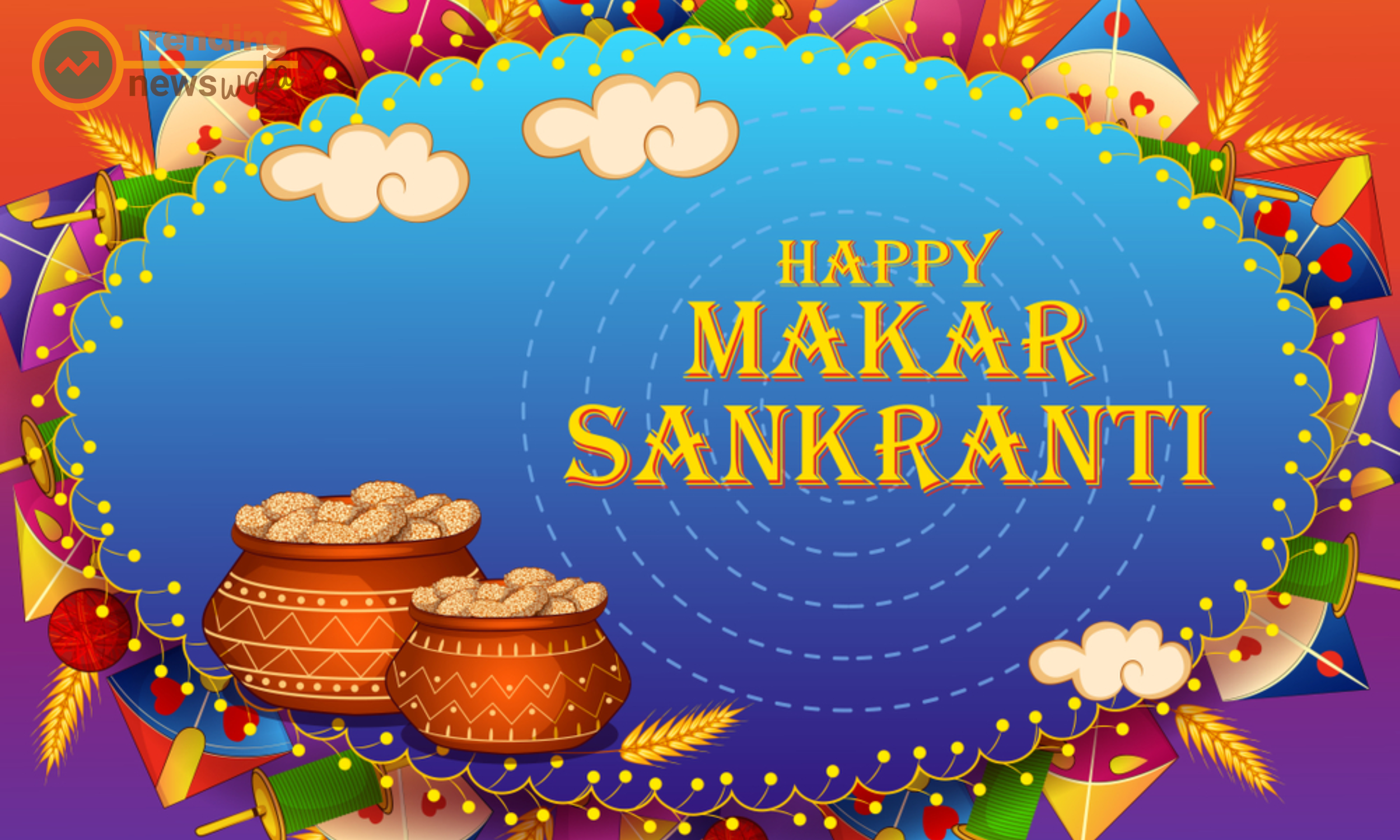
Makar Sankranti emphasizes the importance of charity and giving back to society. Many people donate food, clothing, and money to the needy as a way of expressing gratitude for the blessings received. Charity drives and community kitchens are organized to distribute meals to the underprivileged, ensuring that everyone can partake in the festive celebrations.
- Charitable giving, or Daan, holds significant importance during Makar Sankranti celebrations. Here are more details about this aspect of the festival:
- Philosophical Foundation: Daan, or charity, is deeply rooted in Hindu philosophy and scriptures, which emphasize the importance of selfless giving as a means of attaining spiritual merit and purifying the soul. It is believed that acts of charity help alleviate suffering, foster compassion, and promote harmony in society. Makar Sankranti provides an auspicious opportunity for individuals to engage in acts of charity and generosity as part of their spiritual practice.
- Types of Charity: Charitable giving during Makar Sankranti encompasses various forms, including donating money, food, clothing, and other essentials to those in need. It also involves offering assistance to marginalized communities, supporting charitable organizations, and contributing to community welfare initiatives. The act of charity is not limited to material gifts but also includes acts of kindness, compassion, and service to others.
- Feeding the Needy: One of the most common forms of charity during Makar Sankranti is feeding the needy and underprivileged. Individuals and organizations organize community kitchens (langar) or distribute meals to the homeless, orphanages, old age homes, and shelters. Food distribution drives are conducted in urban areas and rural villages, ensuring that everyone can partake in the festive celebrations irrespective of their socio-economic status.
- Clothing and Blanket Drives: Another form of charity during Makar Sankranti involves donating clothing, blankets, and winter essentials to the less fortunate. As Makar Sankranti coincides with the peak of the winter season, warm clothing and blankets are essential for those living in cold climates. Donation drives are organized to collect new or gently used clothing items and distribute them to individuals and families in need.
- Financial Contributions: Many people choose to make financial contributions to charitable organizations, trusts, or temples during Makar Sankranti as a way of supporting humanitarian causes and community development projects. These contributions may be directed towards education, healthcare, infrastructure development, environmental conservation, or disaster relief efforts, depending on the needs of the community.
- Animal Welfare: Makar Sankranti is also an occasion to show compassion towards animals and support animal welfare initiatives. Some devotees choose to feed stray animals, provide shelter for injured or abandoned animals, or contribute to organizations working for the protection and welfare of animals. Feeding birds, especially migratory birds, is considered an auspicious act of charity during Makar Sankranti.
- Spiritual Merit: In Hinduism, acts of charity are believed to generate punya (spiritual merit) for the donor, which contributes to their spiritual growth and well-being. By engaging in selfless acts of giving, individuals accumulate positive karma and create positive energy that benefits both themselves and the recipients of their charity. Makar Sankranti is considered an opportune time to earn spiritual merit through acts of charity and selflessness.
In summary, charitable giving during Makar Sankranti is a deeply ingrained tradition that reflects the values of compassion, generosity, and community service. By extending a helping hand to those in need, individuals not only uplift the lives of others but also purify their own hearts and souls. Through acts of charity, Makar Sankranti becomes a celebration of compassion and goodwill, enriching the festive spirit with the joy of giving.
Decorating Homes and Rangoli:
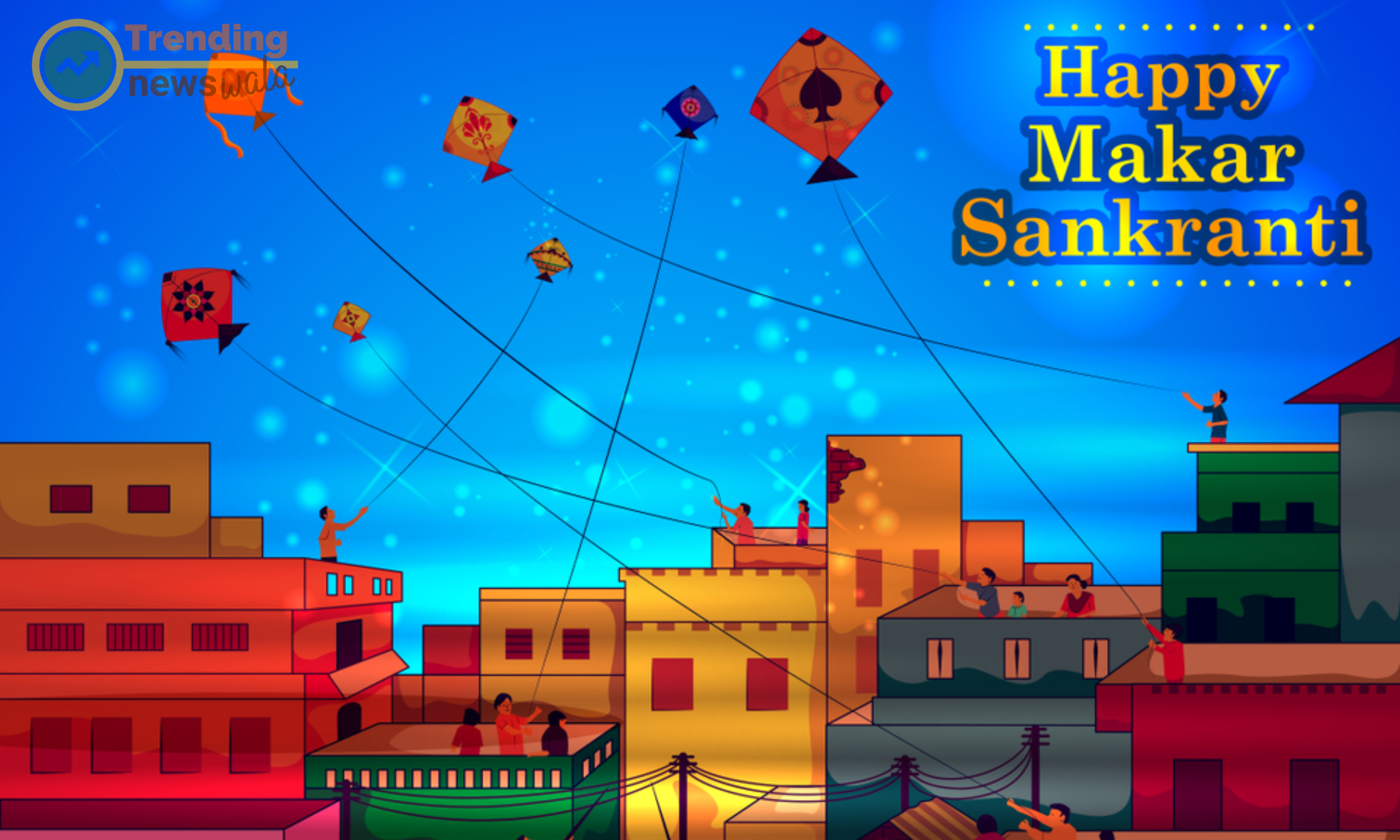
Homes are adorned with colorful decorations and rangoli designs during Makar Sankranti. Entrances are decorated with mango leaves, marigold flowers, and sugarcane stalks, symbolizing prosperity and auspiciousness. Intricate rangoli patterns are drawn at doorsteps using colored powders, rice flour, or flower petals, adding to the festive ambiance.
- Decorating homes and creating rangoli designs are integral parts of Makar Sankranti celebrations, adding color and vibrancy to the festive atmosphere. Here are more details about these traditions:
- Homes Decorations: In preparation for Makar Sankranti, people decorate their homes with colorful adornments and festive embellishments. This includes cleaning and beautifying the house, arranging fresh flowers, and hanging decorative items such as torans (door hangings), garlands, and colorful fabrics. Homes are adorned with mango leaves, marigold flowers, and other auspicious decorations to welcome prosperity and good fortune.
- Rangoli Designs: Rangoli, also known as kolam or alpana, is a traditional art form in which intricate patterns and designs are created on the floor using colored powders, rice flour, or flower petals. Rangoli designs vary in complexity and symbolism, ranging from simple geometric patterns to elaborate motifs inspired by nature, mythology, and religious symbols. These vibrant designs are believed to invite positive energy, prosperity, and good luck into the home.
- Symbolism of Rangoli: Rangoli holds symbolic significance in Indian culture and is considered an auspicious ritual for various occasions, including festivals, weddings, and religious ceremonies. The intricate patterns and vibrant colors of rangoli are believed to ward off evil spirits, welcome guests, and create a harmonious environment. Rangoli is also a form of creative expression and a means of showcasing artistic talent and cultural heritage.
- Traditional Techniques: Creating rangoli designs requires skill and creativity, and different regions of India have their own unique techniques and styles. In North India, rangoli is often made with dry colors or colored powders, while in South India, it is common to use rice flour or chalk powder. Some artists also incorporate natural materials such as flower petals, grains, and leaves into their rangoli designs, adding texture and dimension to the artwork.
- Community Participation: Rangoli-making is a communal activity that brings people together to celebrate the festive spirit of Makar Sankranti. Families, neighbors, and friends gather to create rangoli designs outside their homes, in courtyards, or in community spaces. It is a time for bonding, creativity, and camaraderie, as participants share ideas, techniques, and stories while working on their designs.
- Competitions and Events: Many communities organize rangoli competitions and events as part of their Makar Sankranti celebrations. Participants showcase their artistic skills and creativity by creating intricate rangoli designs on designated themes. Judges evaluate the designs based on criteria such as creativity, symmetry, color coordination, and technical execution. These competitions encourage friendly rivalry and foster a sense of pride in cultural heritage.
- Temporary Art: Rangoli designs are temporary artworks that are created and displayed for a brief period, typically lasting from a few hours to a few days. After the festivities, the rangoli designs are swept away or washed off, symbolizing the impermanence of life and the transient nature of beauty. This ritual of creating and erasing rangoli reflects the cyclical nature of existence and the ephemeral beauty of the world.
In summary, decorating homes and creating rangoli designs are cherished traditions that add joy, beauty, and auspiciousness to Makar Sankranti celebrations. These practices not only enhance the festive ambiance but also serve as expressions of creativity, culture, and spirituality, bringing communities together in a spirit of unity and harmony.
Cultural Significance:
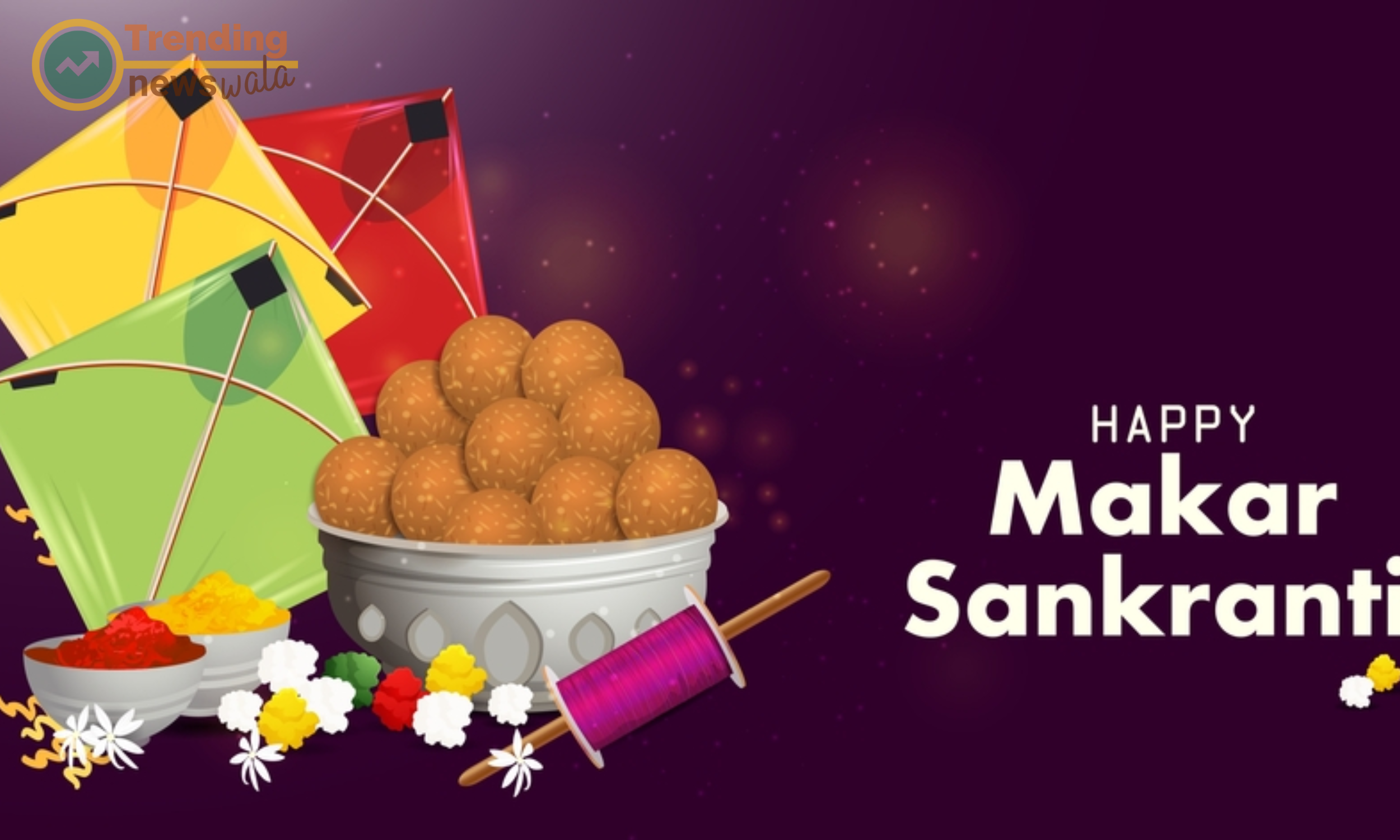
Makar Sankranti holds cultural significance beyond religious observance. It marks the beginning of the harvest season, when farmers reap the fruits of their labor and celebrate the abundance of nature. The festival also signifies the triumph of light over darkness, symbolizing the victory of righteousness and enlightenment over ignorance and evil.
- Makar Sankranti holds significant cultural importance in India, reflecting the diverse cultural heritage and traditions of the country. Here are more details about the cultural significance of Makar Sankranti:
- Harvest Festival: Makar Sankranti marks the transition of the Sun into the zodiac sign of Capricorn (Makara), signaling the onset of longer days and the end of the winter solstice. As a harvest festival, Makar Sankranti celebrates the abundance of the winter crops and the agricultural prosperity of the land. It is a time for farmers to rejoice in the bountiful harvest and express gratitude for the blessings of nature.
- Regional Diversity: Makar Sankranti is celebrated with diverse customs, traditions, and rituals across different regions of India, reflecting the rich cultural tapestry of the country. In North India, it is known as Lohri in Punjab, Uttarayan in Gujarat, and Pongal in Tamil Nadu. Each region has its own unique way of observing the festival, with distinct rituals, culinary traditions, and cultural practices that highlight the local customs and beliefs.
- Unity in Diversity: Despite the regional variations, Makar Sankranti fosters a sense of unity in diversity, bringing people of different backgrounds together to celebrate a common cultural heritage. It transcends barriers of religion, caste, and language, uniting communities in a spirit of shared celebration and camaraderie. The festival promotes social cohesion, mutual respect, and cultural exchange among people from various walks of life.
- Symbolism of Renewal: Makar Sankranti symbolizes the renewal of life, vitality, and hope as the Sun begins its journey northward, bringing warmth and light to the earth. It marks the end of the dark, cold winter months and the beginning of a new agricultural cycle filled with promise and potential. The festival inspires optimism, resilience, and a sense of renewal among individuals and communities.
- Traditional Arts and Crafts: Makar Sankranti provides an opportunity to showcase traditional arts and crafts that are passed down through generations. From creating colorful rangoli designs and intricate kolams to crafting decorative items such as torans (door hangings) and garlands, the festival celebrates the creativity, craftsmanship, and artistic expression of the Indian people. These traditional arts and crafts add beauty and charm to homes and public spaces, enhancing the festive ambiance of Makar Sankranti.
- Culinary Heritage: Food plays a central role in Makar Sankranti celebrations, with each region boasting its own culinary specialties and delicacies. From tilgul (sesame seed sweets) in Maharashtra to pongal (sweet rice dish) in South India and gajak (sesame seed brittle) in North India, the festival is a feast for the senses, offering a diverse array of flavors, textures, and aromas that reflect the culinary heritage of the country.
- Interconnectedness with Nature: Makar Sankranti underscores the deep connection between humans and nature, highlighting the symbiotic relationship between agricultural practices, seasonal cycles, and cultural traditions. The festival honors the natural elements - earth, water, fire, and air - and celebrates their role in sustaining life and nourishing the planet. It promotes environmental awareness, conservation, and sustainable living practices, encouraging people to live in harmony with nature.
In summary, Makar Sankranti is more than just a religious or agricultural festival; it is a celebration of India's rich cultural diversity, traditional wisdom, and timeless values. Through its rituals, customs, and festivities, Makar Sankranti reflects the enduring spirit of unity, resilience, and cultural heritage that defines the Indian ethos.

What is Makar Sankranti?
Makar Sankranti is a Hindu festival celebrated across India to mark the transition of the Sun into the zodiac sign of Capricorn (Makara). It is observed on January 14th or 15th every year, marking the beginning of longer days and the end of the winter solstice.
What is the significance of Makar Sankranti?
Makar Sankranti holds multiple significances including being a harvest festival, marking the onset of spring, and symbolizing the transition of the Sun into the northern hemisphere. It is also considered an auspicious time for spiritual practices and rituals.
How is Makar Sankranti celebrated?
Makar Sankranti is celebrated with various customs and traditions including taking holy baths in sacred rivers, flying kites, organizing bonfires, offering prayers to the Sun god, sharing festive meals, distributing sweets, and engaging in charitable activities.
Why is kite flying associated with Makar Sankranti?
Kite flying, known as Uttarayan, is associated with Makar Sankranti as it symbolizes the transition of the Sun into the northern hemisphere. It is believed that flying kites during this time brings good luck and prosperity.
What are some traditional foods eaten during Makar Sankranti?
Traditional foods eaten during Makar Sankranti vary across different regions of India. Some common dishes include tilgul (sesame seed sweets), pongal (sweet rice dish), gajak (sesame seed brittle), jaggery-based sweets, khichdi, and various regional delicacies.
Why are bonfires lit during Makar Sankranti?
Bonfires are lit during Makar Sankranti, particularly in North India, as part of the Lohri celebrations. The bonfires symbolize the end of winter and the return of longer days. They also serve as a focal point for community gatherings and cultural performances.
What is the significance of charity (daan) during Makar Sankranti?
Charity, or daan, is considered auspicious during Makar Sankranti as it symbolizes compassion, generosity, and sharing with those in need. It is believed that acts of charity performed during this time earn spiritual merit and blessings.
How do different regions of India celebrate Makar Sankranti?
Makar Sankranti is celebrated with regional variations across India. In North India, it is known as Lohri and Uttarayan, in South India it is called Pongal, in Maharashtra it is celebrated as Makar Sankranti, and in Assam it is known as Bhogali Bihu. Each region has its own unique customs, rituals, and culinary traditions associated with the festival.
Is Makar Sankranti a religious festival?
Makar Sankranti is both a religious and cultural festival. While it has roots in Hinduism and is dedicated to the Sun god, it is also celebrated by people of other faiths and communities across India, reflecting its cultural significance and inclusivity.
What is the significance of taking a holy dip in rivers on Makar Sankranti?
Taking a holy dip in rivers on Makar Sankranti is believed to cleanse one's sins, purify the soul, and bestow blessings for spiritual growth and well-being. It is considered an auspicious ritual that marks the beginning of a new phase in the annual cycle.



